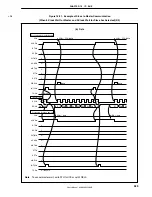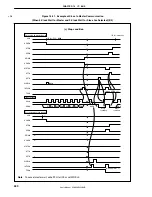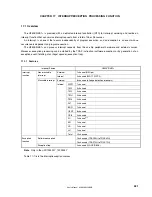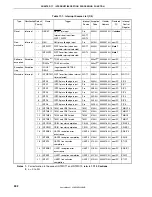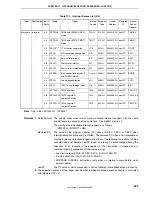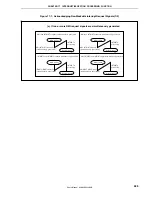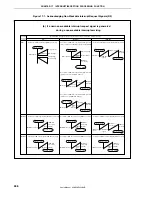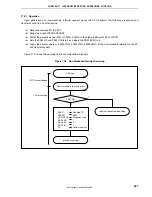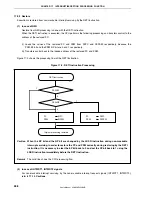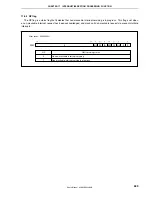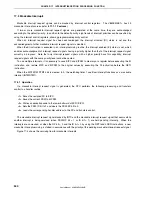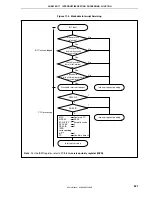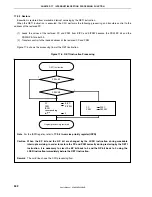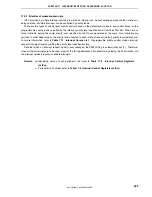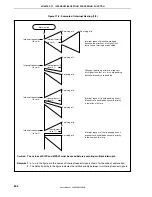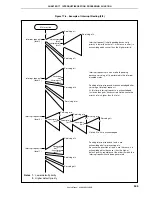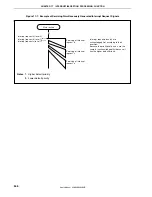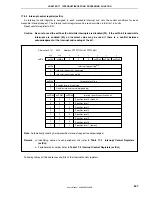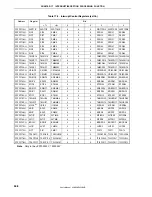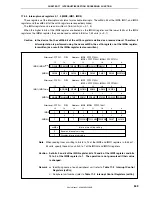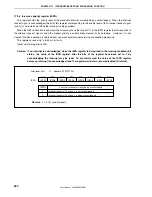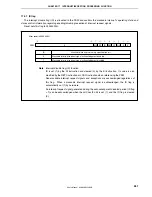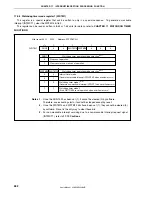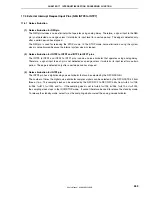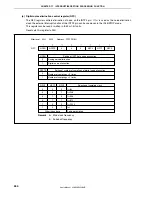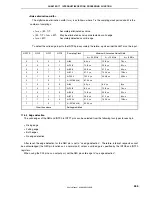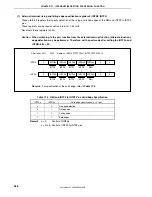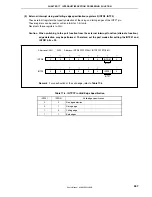
CHAPTER 17 INTERRUPT/EXCEPTION PROCESSING FUNCTION
User’s Manual U16896EJ2V0UD
543
17.3.3 Priorities of maskable interrupts
INTC provides a multiple interrupt servicing in which an interrupt can be acknowledged while another interrupt is
being serviced. Multiple interrupts can be controlled by priority levels.
There are two types of priority level control: control based on the default priority levels, and control based on the
programmable priority levels specified by the interrupt priority level specification bit (xxICn.xxPRn bit). When two or
more interrupts having the same priority level specified by xxPRn are generated at the same time, interrupts are
serviced in order depending on the priority level allocated to each interrupt request (default priority level) beforehand.
For more information, refer to
Table 17-1 Interrupt Source List
. Programmable priority control divides interrupt
requests into eight levels by setting the priority level specification flag.
Note that when an interrupt request signal is acknowledged, the PSW.ID flag is automatically set (1). Therefore,
when multiple interrupts are to be used, clear (0) the ID flag beforehand (for example, by placing the EI instruction into
the interrupt service program) to enable interrupts.
Remark
xx: Identifying name of each peripheral unit (refer to
Table 17-2 Interrupt Control Registers
(xxICn)
)
n: Peripheral unit number (refer to
Table 17-2 Interrupt Control Registers (xxICn)
)

